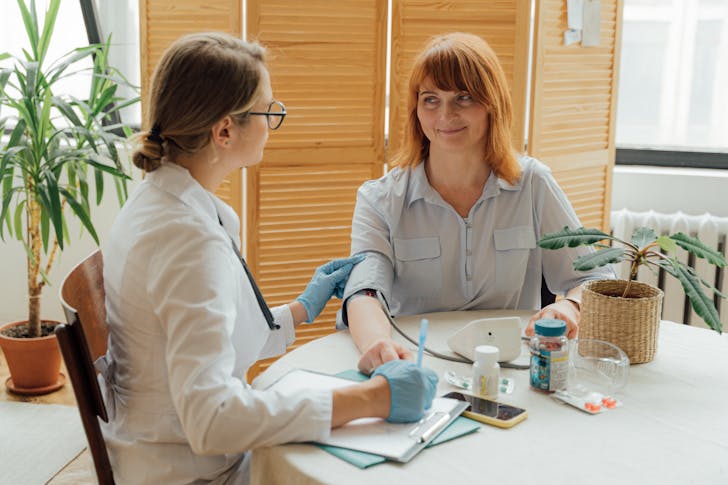Lifestyle medicine is breaking barriers in healthcare by improving health outcomes in low-income communities. Traditionally perceived as a luxury for wealthier individuals, lifestyle medicine has proven to be a powerful tool for reducing health disparities. By integrating lifestyle-focused interventions, healthcare providers can empower patients with limited resources to make small, impactful changes, addressing chronic diseases and enhancing their quality of life.
Addressing Health Disparities With Lifestyle Medicine
The COVID-19 pandemic highlighted the unequal health outcomes tied to chronic diseases in marginalized communities. These disparities underscore the need for accessible lifestyle medicine, which promotes evidence-based behavior changes to improve overall health.
While some may view lifestyle medicine as a privilege, it’s an essential component of healthcare. Many programs now offer lifestyle medicine services, helping bridge the gap and bringing these life-changing interventions to underresourced populations.

Overcoming Social Determinants of Health
Barriers like food insecurity, lack of safe recreational areas, and inadequate transportation influence health outcomes and lifestyle choices. These social determinants of health (SDOH) complicate efforts to adopt healthier habits, making it crucial for clinicians to address them.
By understanding and documenting these challenges, healthcare providers can offer tailored recommendations that fit patients’ unique situations. Addressing these obstacles increases the likelihood of successful treatment outcomes, empowering patients to make positive changes despite their circumstances.
Expanding Access to Lifestyle Medicine
Historically, lifestyle medicine wasn’t widely available in low-income communities, often restricted by cost and limited provider availability. However, since the establishment of board certification in 2017, lifestyle medicine has expanded into medical schools, residency programs, and large health systems.
Community-driven models now exist to bring these services to underresourced populations. Certified clinicians work in various settings, including community health centers and large healthcare networks, offering lifestyle medicine in an affordable, sustainable way.
Community Programs Making a Difference
Innovative partnerships are increasing access to lifestyle medicine in low-income areas. For example, in collaboration with UC San Diego Health, Mama’s Kitchen provides medically tailored meals to individuals managing chronic illnesses.
This program ensures that patients receive the nutrition they need to support their treatment and recovery. Similarly, the Kellyn Foundation’s Eat Real Food Mobile Market brings fresh produce to areas in Pennsylvania’s Lehigh Valley, where food insecurity is prevalent. These initiatives underscore the importance of local partnerships in delivering effective lifestyle medicine interventions.
Small Lifestyle Changes, Big Impact
Lifestyle changes don’t need to be overwhelming to be effective. For example, introducing a small amount of nutrient-dense foods, such as canned beans or frozen greens, into one’s diet can make a significant difference over time.
Physical activities like sit-to-stands or balance exercises can also be done at home, eliminating the need for expensive gym memberships. Simple practices, like deep breathing and consistent sleep routines, further demonstrate that impactful lifestyle changes can be both accessible and cost-free.

Training a Diverse Lifestyle Medicine Workforce
To extend lifestyle medicine’s reach in underserved communities, it’s essential to support a workforce that reflects these populations. The Health Equity Achieved through Lifestyle Medicine (HEAL) Initiative aims to certify clinicians from underrepresented backgrounds, providing scholarships and training opportunities.
With programs like these, lifestyle medicine is becoming more inclusive and responsive to the needs of diverse communities, fostering a healthcare landscape that better serves everyone.
Screening for Social Determinants of Health
Screening for social determinants of health (SDOH) is an essential first step for healthcare providers. The American Academy of Family Physicians offers screening tools that help clinicians understand patients’ social challenges and connect them to community resources.
Additionally, the 2024 Medicare Physician Fee Schedule includes new codes for SDOH documentation, encouraging clinicians to incorporate this essential component into their practice. Through these tools, healthcare providers can better address lifestyle factors and create personalized care plans.
Encouraging Lifestyle Medicine Conversations
Every patient deserves the opportunity to explore lifestyle medicine as a pathway to better health. While some may be hesitant or unable to commit to extensive lifestyle changes, small conversations can make a big difference. When clinicians discuss the potential benefits of lifestyle medicine, patients gain the knowledge and agency to decide for themselves. By meeting patients where they are and working with them to find feasible solutions, healthcare providers can transform lives, one small change at a time.
Incorporating lifestyle medicine into low-income communities offers a valuable opportunity to reduce health inequities. With continued efforts, lifestyle medicine can empower individuals to overcome challenges and improve their quality of life.




